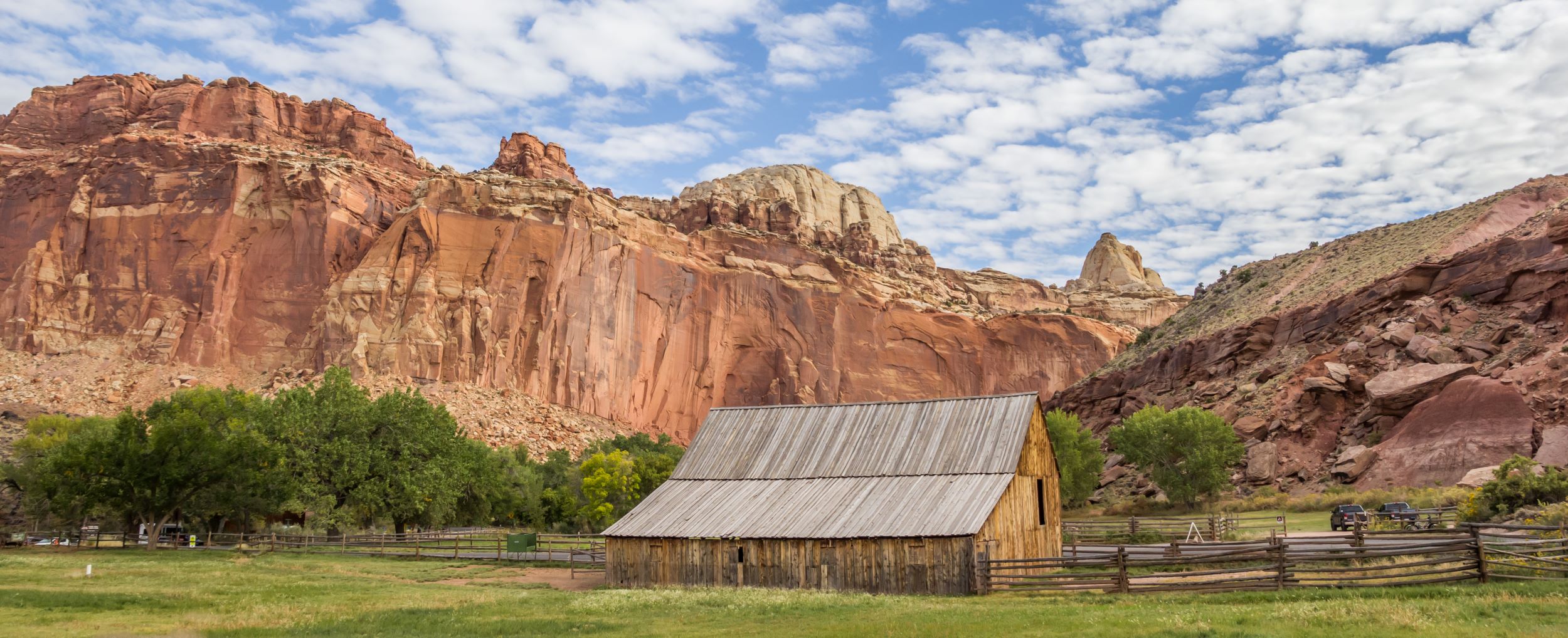
Capitol Reef National Park
Capitol Reef National Park, located in south-central Utah, is a hidden gem among the United States' national parks. Established in 1971, this park spans approximately 241,904 acres and is characterized by its unique geological features, including cliffs, canyons, domes, and bridges. The park is named for its resemblance to the white domes of the U.S. Capitol building and the rocky ridges that resemble a barrier reef. Capitol Reef is part of the larger Waterpocket Fold, a nearly 100-mile long warp in the Earth's crust that is a classic monocline, a step-like fold in rock strata.
The geological history of Capitol Reef is fascinating, with the Waterpocket Fold being the defining feature. Formed approximately 50-70 million years ago during the Laramide Orogeny, this fold is a striking geologic monocline that extends from Thousand Lake Mountain to Lake Powell. The park's landscape is a showcase of nearly 200 million years of geological history, with layers of rock revealing different environments from the past, such as deserts, shallow seas, and swamps. These layers have been exposed by erosion and uplift, creating the park's varied terrain.
Capitol Reef's climate is characterized by hot summers and cold winters, typical of a desert environment. The park's elevation ranges from 3,800 to 8,960 feet, contributing to a significant variation in temperature and precipitation. Summer temperatures can exceed 100 degrees Fahrenheit, while winters can be quite cold with occasional snowfall. Precipitation is generally low but can vary, with most rain falling during the late summer monsoon season.
The park's diverse ecosystems support a variety of plant and animal life adapted to its desert environment. Vegetation in the lower elevations includes desert shrubs like sagebrush, juniper, and pinyon pine. The park's riparian areas along the Fremont River and its tributaries support cottonwoods, willows, and other moisture-loving plants. Wildlife in the park includes desert species like mule deer, coyotes, and mountain lions, as well as smaller mammals, reptiles, and a variety of bird species.
One of Capitol Reef's most notable features is the scenic drive that takes visitors through the heart of the park, offering stunning views of the Waterpocket Fold and the surrounding landscape. The drive includes several points of interest, such as the Hickman Bridge, a natural arch, and Capitol Dome, a formation reminiscent of the U.S. Capitol's dome.
The park is also home to the historic Fruita district, where Mormon settlers established a community in the late 19th century. The remnants of this settlement, including orchards, a schoolhouse, and a barn, are preserved within the park. Visitors can experience this unique historical landscape, and during the harvest season, they can even pick fruit in the orchards.
Capitol Reef offers numerous hiking trails that range from easy walks to strenuous backcountry treks. The Cassidy Arch Trail is a popular moderate hike that leads to a large natural arch, offering spectacular views of the surrounding landscape. For those seeking a more challenging experience, the Upper Muley Twist Canyon Trail takes hikers through a remote section of the Waterpocket Fold, with opportunities to see striking rock formations and expansive vistas.
The park's night skies are another significant attraction. Like many remote areas in Utah, Capitol Reef offers exceptional opportunities for stargazing due to its low levels of light pollution. The park has been designated a Gold-Tier International Dark Sky Park, making it an ideal location for night photography and observing celestial events.
The human history in Capitol Reef is rich, with evidence of ancient Indigenous peoples, such as the Fremont Culture, who left behind petroglyphs and other artifacts. These ancient carvings can be seen on some of the rock faces in the park, providing a glimpse into the lives of the people who lived in the area over a thousand years ago.
In conclusion, Capitol Reef National Park is a place of significant geological, historical, and natural interest. Its unique landscape, formed by the Waterpocket Fold, offers a wide range of recreational opportunities and a chance to explore both the natural world and the human history of this remote part of Utah. Whether hiking its trails, exploring its historical sites, or simply enjoying the beauty of its rugged landscape, Capitol Reef provides an unforgettable experience for all who visit.